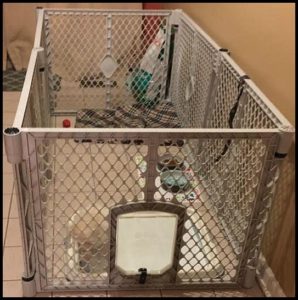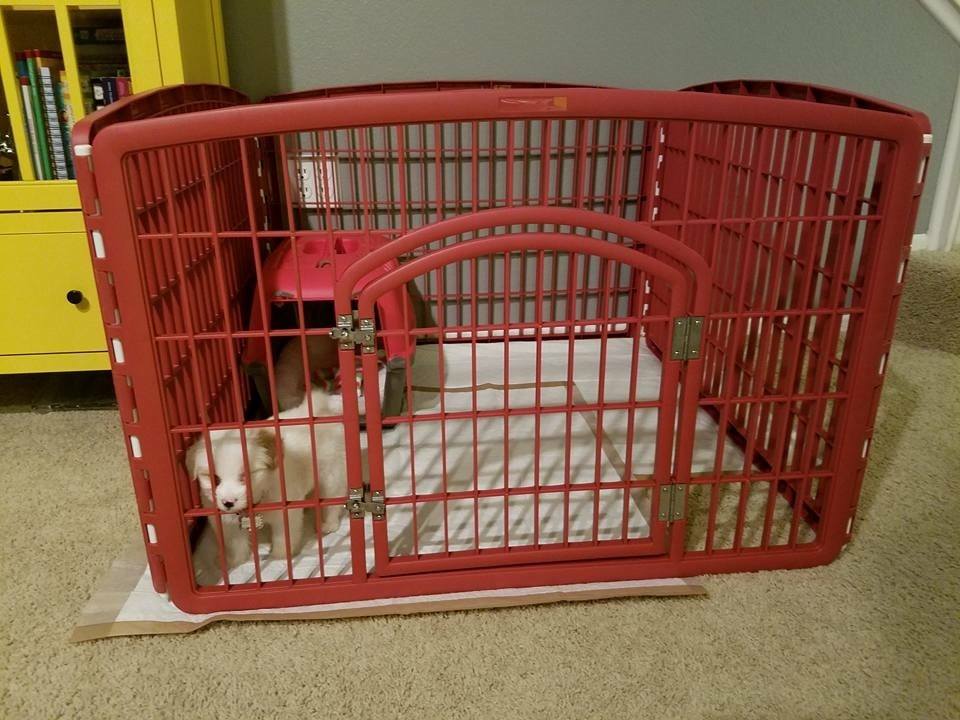|
One question I constantly get is “what is the best method for Potty Training my new puppy?” I have tried all sorts of different methods and most were very hard and frustrating. I eventually came across one method that is so simple and easy and I tried it on my own puppies and dogs, and sure enough, this method really works!
To begin, it is strongly recommended that you be home with your puppy during the first two weeks following arrival. When you can spend the majority of the daylight hours with your new puppy, you will begin to see positive results twice as fast as someone who isn’t available as much and therefore, cannot give as much supervision. Please remember, puppies do have accidents and that each puppy learns on an individual basis. Just be patient. Toy breeds have smaller stomach, and after the first few days, they seem to eat in a browsing fashion due to the many distractions and smells of their new environment. At first (until they can control their bladders better), your puppy should be ready to go potty around 30-40 minutes after eating or drinking. For the first few weeks, leave out food and water, in the same location, so they can become familiar with where their food is. After a few weeks, start them on a feeding schedule, generally feeding them three times a day, until about 1 year of age. Remove the meal after 30 minutes; this will help your puppy develop a regular eating pattern and elimination schedule. 1st STEP: The easiest way to set up a puppy area for potty training is to confine the puppy in their “own” space. It can be a small hallway, laundry room, utility room, part of the kitchen, as long as the area can be closed off with some type of gate or closure. We suggest a “Puppy Apartment” if you don’t have a small room. You can also purchase gates, or several gates to make your enclosure. 2nd STEP: place puppy bed, food & water, newspaper (potty pad) as illustrated above. Leave enough room in the middle for a small area. Puppies do not like to potty where they sleep, eat or play. So guess where they will go? That’s right: on the newspaper or pee pad. Remember if you see them going, praise them and give an appropriate treat. 3rd STEP: put your puppy in their new “room” with a few toys. Rotate the toys often as they love to receive new toys. Try to keep your puppy in their new rooms at least 20 – 30 minutes each day, or whenever you are around to supervise them. You want their new room to be a safe haven, non-threatening place for them to go, and have their own time and space, away from all distractions of your household. Remember, when you see them going potty, praise him and give an appropriate treat. Make their room, a special place. Each time you put your puppy in their “space” use the command word “BELLA ROOM”. Eventually, they will go in their room on their own. After your puppy gets the routine of going on the potty pad (or newspaper) down pat, you are ready for next step. This could take just a few days or a few weeks. Every puppy catches on at a different pace. 4th STEP: Place the newspaper near the door where you want the puppy to go out for a few days. Then move the paper outside (weather permitted). They will want to go to the paper and will let you know at the door. You can always hang a bell and use their nose or paw to ring the bell each time before they go out. Use a command word like “BELLA POTTY” or “BELLA OUTSIDE”. Praise them when they go outside. Some apartment dwellers put the newspaper shredded up in a kitty litter box or kitty litter in place of newspaper or pee pads. One of the best things about this potty training method is the puppy can have their own space and have everything they need. They are not out running around tearing or chewing things up. You will know your puppy is safe and happy, and most importantly they will feel secure in their new environment even when left alone.
0 Comments
Leave a Reply. |
CATEGORIES
TRAINING - Basic Training - Crate Training - Potty Training - 6 Steps to Perfect Pup - Tips GENERAL INFO - Our Breeds - Male vs. Female - Colors of mixed Breed HEALTH -Pumpkin Benefits -No eating foods - Giardia - Coccidia -Tear Stains - Health Insurance |




